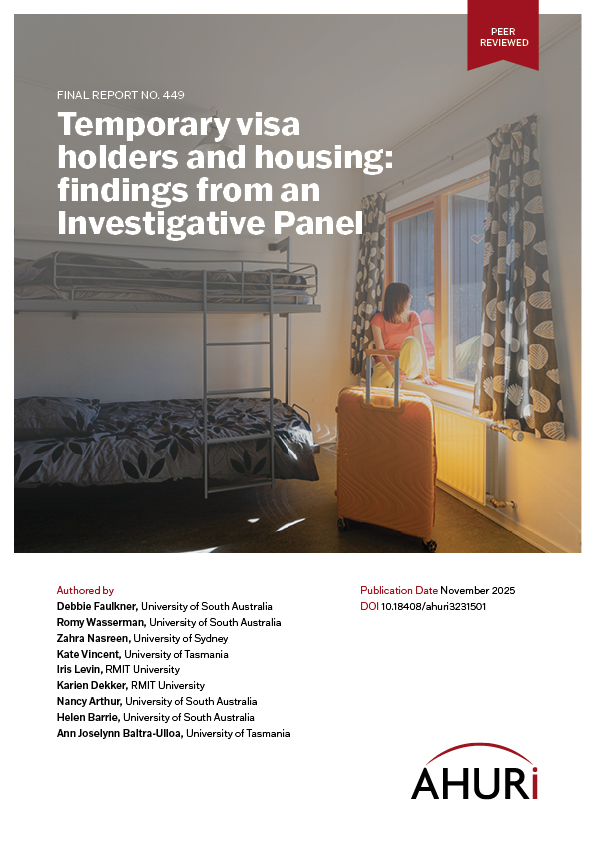
Tackling the temporary visa holder housing blind spot
20 Nov 2025
New AHURI research explores the impact of the housing crisis on temporary migrants, and how new support systems could enhance migrants’ wellbeing and economic contribution.
University of South Australia associate professor and study lead Dr Debbie Faulkner said the aim was to address a blind spot around the housing stress faced by a group that was increasingly important to Australia’s economy and society.
“Since the 1990s, governments have tried to make the migration system more flexible by shifting policy from permanent to temporary migration,” Dr Faulkner said.
“This trend has resulted in more than 2.8 million people in Australia on temporary visas at the end of 2024 – the equivalent of 10.5 per cent of the population. Despite this growth, there has been little change in the programs available to support them.”
The research focused on the roughly 1.7 million temporary migrants who were not New Zealanders or tourists, but Dr Faulkner said the entire cohort generally lacked eligibility for housing support and were understudied.
Addressing a blind spot
Dr Faulkner said lack of research likely contributed to migrants being blamed for the rental crisis, without much consideration of their vulnerability to it.
The study – drawing on literature and data reviews, interviews with migrants, and expert panels – found temporary migrants actually often bore the brunt of the rental crisis.
Australian Bureau of Statistics data showed in 2021, roughly 20 per cent lived in overcrowded conditions, compared to seven per cent of the general population.
Dr Faulkner said that Australian evidence indicates that migration has a minimal impact on the cost of housing.
“A first of its kind study released earlier this year that looked at international students’ impact on Australia’s rental market found their impact to be marginal,” she said.
Migrants dependent on the private market
Dr Faulkner’s study found lack of government services to help temporary migrants result in most being dependent on the private rental market.
“In 2021, only 1.6 per cent of all temporary migrants were renting social or community housing, despite often earning wages that made private renting hard,” Dr Faulkner said.
Interviews with housing sector spokespeople revealed support often fell to churches or migrant community groups, and some support providers broke the rules and went beyond their funding remits to help struggling migrants.
Interviews with migrants revealed many were unaware of housing shortages when they arrived and struggled to find a home due to unaffordability or lack of references.
“There’s no government department that really looks after temporary migrants and this disconnect means the housing pressures can go unrecognised, and leave migrants facing a form of hidden homelessness,” Dr Faulkner said.
The research highlighted migrants at particular risk – including women suffering domestic abuse who weren’t entitled to long-term shelter, and international students whose reliance on informal forums to find homes left them vulnerable to fraud.
The study recommended expanding national and state services to better support migrants, and more funding for local hubs and support networks.
Greater oversight needed
Agencies overseeing visa classes could also monitor hosted accommodation, like that provided by Pacific Australia Labour Mobility (PALM) schemes, as migrants’ reliance on these providers was found to leave them vulnerable to exploitation.
Dr Faulkner said Australians should care how temporary migrants coped with housing pressures, because lack of support could lead to entrenched disadvantage, homelessness, and migrants not reaching their full economic potential.
“Many migrants stay long-term - Department of Home Affairs data shows about 60 per cent of permanent visas went to migrants already in Australia,” she said.
The research was undertaken for AHURI by researchers from University of South Australia, The University of Sydney, University of Tasmania, and RMIT University.

